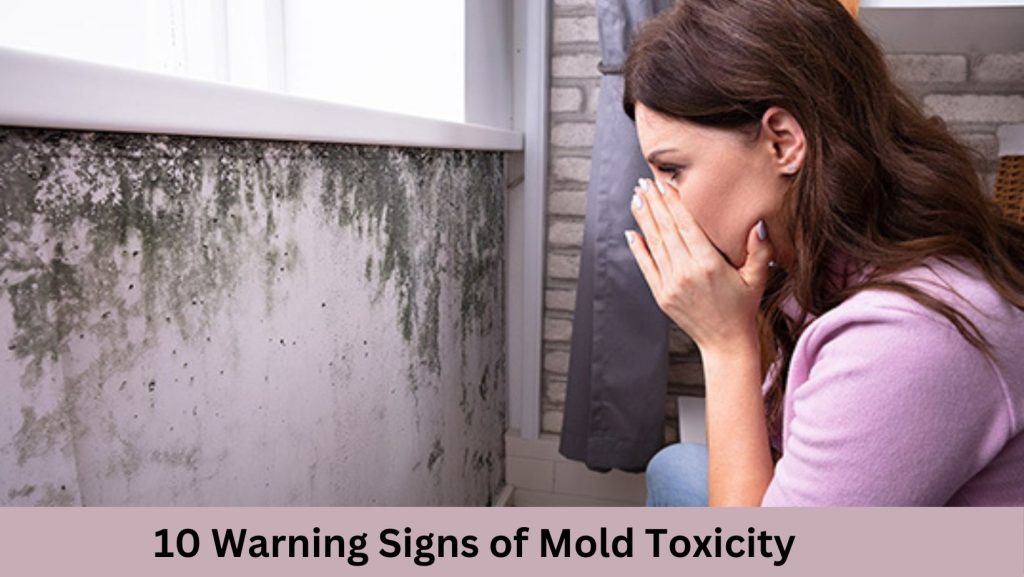Mold toxicity, also known as chronic inflammatory response syndrome (CIRS), is a condition caused by exposure to mycotoxins produced by certain types of mold. Prolonged exposure to these toxins, especially in damp indoor spaces, can lead to a variety of health issues.
What Causes Mold Toxicity?
- Exposure to mycotoxins from mold species such as Aspergillus, Penicillium, Stachybotrys, and Wallemia
- Water damage, high humidity, poor ventilation, and damp conditions allow mold to thrive indoors
- Genetic susceptibility – HLA-DR genotype makes some people more vulnerable to biotoxins
How Mold Toxicity Affects the Body:
- Mycotoxins are biotoxins that inflame tissues, cells, and biological systems
- Chronic inflammatory response alters immunity, endocrine function, and neural pathways
- Biotoxins cross blood-brain barrier, impacting neurological health
- Mitochondrial function damaged, causing fatigue and muscle pain
- Multiple organs affected including brain, lungs, gut, and immune system

10 Warning Signs of Mold Toxicity
Mold exposure can cause a variety of health issues, from allergies and asthma to more serious conditions like mold toxicity. Mold toxicity, also known as chronic inflammatory response syndrome (CIRS), occurs when mycotoxins from mold overgrow in the body. This can lead to chronic inflammation and a weakened immune system. Here are 10 warning signs that you may be suffering from mold toxicity.
1. Brain Fog and Difficulty Concentrating
One of the most common symptoms of mold toxicity is brain fog, which includes issues with memory, focus, and concentration. Many people describe it as feeling like you’re in a mental haze all the time. Brain inflammation from mold exposure can impair cognitive function and make normal daily tasks more difficult. If you constantly lose your train of thought or struggle to stay focused, it could point to an underlying issue with mold.
2. Headaches and Migraines
Frequent headaches and migraines can also be a sign of mold toxicity. Mold creates inflammation in the body that can constrict blood vessels and cause severe head pain. These headaches may feel different than other types – starting in the sinus area and radiating throughout the head. The migraines are often accompanied by sensitivity to light and sound. If you notice an uptick in migraines after moving or spending time in a damp building, it could be due to mold exposure.
3. Chronic Fatigue
Extreme and persistent exhaustion is a hallmark of mold toxicity. While normal fatigue has many causes, unexplained chronic tiredness often points to something more serious. Mold exposure releases cytokines and other chemicals that make you feel constantly worn out no matter how much rest you get. It may feel like you have no energy to get through normal daily activities. If you can’t seem to bounce back from feeling drained, mold toxicity could be putting your body under constant stress.
4. Muscle Aches and Pain
Chronic inflammatory responses from mold exposure can also cause muscle pain, joint pain, and body aches. You may notice pain and stiffness for no clear reason, especially upon waking up in the morning. The toxins from mold irritate nerve endings and tissues, making your whole body ache. These aches and pains have no visible cause like injury or exercise but persist and seem to move around the body. Unexplained and migrating aches can have an underlying environmental cause like mold.
5. Shortness of Breath and Cough
Respiratory issues like shortness of breath, coughing, and wheezing are other common symptoms. Mold spores and particles inhaled into the lungs can cause inflammation and irritation. You may feel like you can’t take a full, deep breath or have trouble getting enough oxygen during normal activity. A chronic cough that won’t go away can also point to mold toxicity, especially if it worsens in certain environments. These respiratory issues tend to flare up in damp buildings with mold problems.
6. Sinus Congestion
Inflammation from mold exposure also causes congestion in the sinus cavities. You may struggle with post-nasal drip, excess mucus in the back of the throat, swollen turbinates, sinus pressure, and nasal polyps. The sinus congestion can lead to chronic sinus infections that are difficult to treat. These issues often don’t respond to normal allergy medications because the root cause is mycotoxins irritating the sinus passages, not environmental allergens. Lingering congestion and sinus infections could mean trouble with mold.
7. Skin Rashes or Irritation
Skin rashes are another common reaction to mold toxicity. You may notice itchy skin, redness, hives, eczema flare-ups, or other irritations and inflammations. Mold toxins circulating in the body can cause histamine reactions that irritate the skin. Rashes that appear suddenly or seem to spread could be a sign of mold exposure. Skin prick testing can check for allergic reactions to different molds. Ruling out other potential causes is important, but skin issues are often an indicator of mold toxicity.
8. Anxiety or Depression
Mold toxicity can also take a toll on mental health, causing or exacerbating anxiety and depression. Chronic inflammation affects neurotransmitters and hormonal balance in ways that impair mood and cognitive health. The physical symptoms and limitations of CIRS also understandably lead to frustration and emotional distress. If you notice a correlation between depressive episodes and time spent in damp buildings, it could point to an environmental cause like mold. Seeking treatment for CIRS may help resolve anxiety and depression.
9. Sensitivity to Smells
Many people with mold toxicity report increased sensitivity to odors. Smells like perfume, cleaning products, or fragrances may trigger headaches, nausea, dizziness, or coughing fits. This is caused by sensory nerve inflammation and irritation. The nerves are on high alert looking for more mold threats. While not everyone with CIRS experiences this, if you do have this sensitivity to smells, it could indicate an issue with mold exposure. It’s especially telling if the sensitivity develops after moving or spending time in a damp building.
10. Feeling Worse in Certain Environments
Finally, if your symptoms consistently worsen when you spend time in certain buildings, it’s a strong sign of a mold problem. Places with water damage, high humidity, poor ventilation, visible mold growth, or musty odors may aggravate your symptoms. You should feel better after leaving the environment and getting fresh air. Take note if certain rooms or buildings reliably trigger headaches, breathing issues, fatigue, sinus congestion, or other symptoms. Pay attention to this pattern as it’s a key indicator of mold toxicity.
In summary, be on the lookout for these 10 Warning Signs of Mold Toxicity: brain fog, headaches, fatigue, muscle aches, shortness of breath, sinus congestion, skin irritation, anxiety or depression, sensitivity to odors, and feeling worse in certain environments. Mold toxicity drags you down and makes you feel sick in ways that can’t be explained by other illnesses. If you are experiencing any combination of these symptoms, especially after spending time in damp buildings, get tested for mold toxicity. With the right treatment, you can detoxify from mold exposure and regain your health. Don’t write off these chronic symptoms or try to simply manage them with medications. Investigate the root cause and determine if CIRS or mold toxicity is at play.



